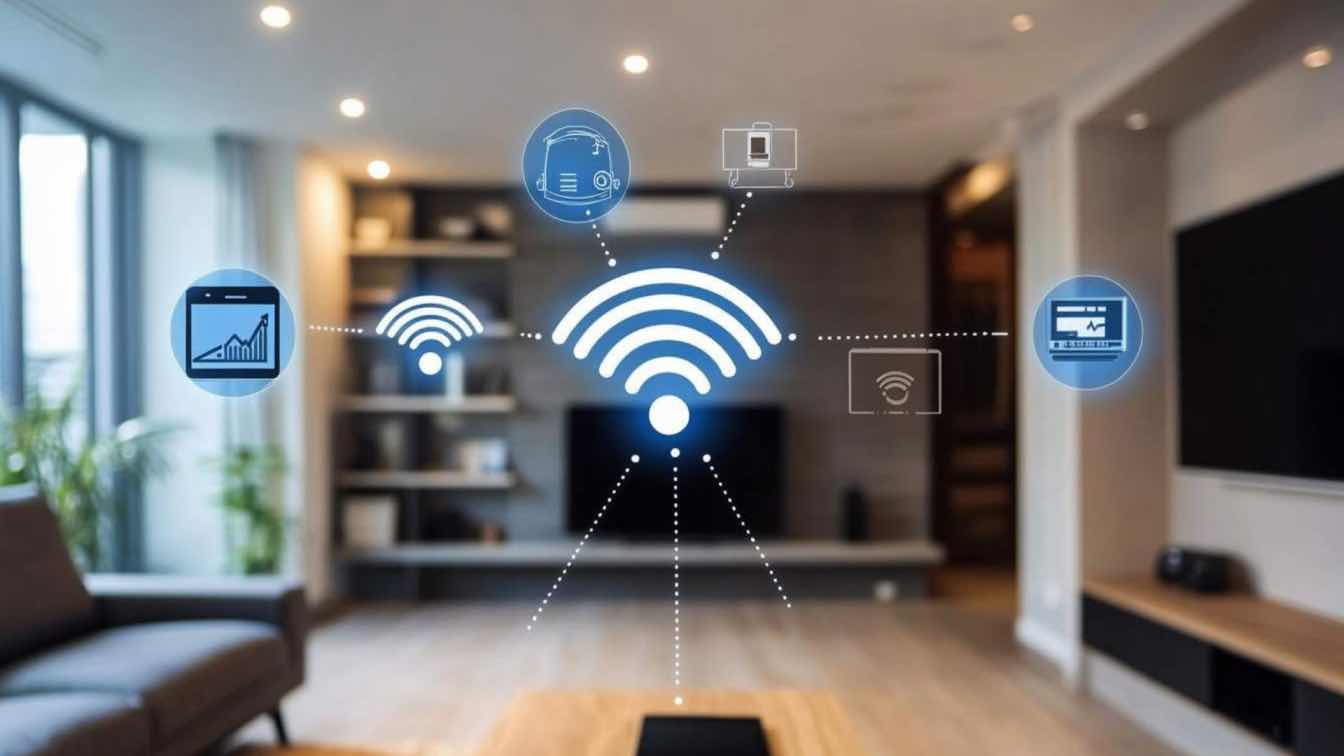Basements present unique challenges for homeowners and renovators alike. Often plagued by poor lighting, inconsistent temperatures, moisture issues, and connectivity problems, these underground spaces have traditionally been difficult to transform into truly comfortable living areas. However, the rapid evolution of smart home technology offers innovative solutions specifically suited to overcome these basement-specific obstacles.
As smart home adoption continues to accelerate—with the global market expected to reach $135.3 billion by 2025—basement renovations increasingly incorporate these technologies from the planning stages. This integration isn't merely about convenience or following trends; it's about solving fundamental problems that have historically limited basement functionality. From adaptive lighting that mimics natural daylight to environmental monitoring systems that prevent moisture damage, strategic smart home technology can transform basements from problematic spaces into sophisticated, comfortable environments that enhance the entire home.
EasyBasements can fulfil your smart home wishes in your basement renovation.
Overcoming Basement Connectivity Challenges
The foundation of any smart home system is reliable connectivity, yet basements present significant obstacles to wireless signals. Concrete walls, steel reinforcement, and the simple fact of being below grade can severely attenuate Wi-Fi and other wireless signals. Addressing these connectivity issues must be the first priority in any smart basement renovation.
Mesh network systems have revolutionized home connectivity by creating multiple access points that communicate with each other, ensuring consistent coverage throughout multi-level homes. Systems like eero, Google Nest Wifi, or Orbi are particularly effective for basements when strategically placed to overcome signal barriers. For optimal performance, position one mesh node at the top of the basement stairs and another centrally within the basement space itself.
For mission-critical applications or media-intensive uses, consider hardwired ethernet connections. During renovation, installing ethernet cables to key locations—entertainment centers, home offices, or smart hubs—provides the most reliable connectivity foundation. Conduit installation during the construction phase is particularly valuable, allowing for future cable upgrades without damaging finished walls.
When selecting smart devices for basement installation, pay careful attention to the wireless protocols they use. Z-Wave technology operates at a lower frequency (908.42 MHz in North America) than typical Wi-Fi, allowing it to penetrate walls and floors more effectively. Zigbee creates mesh networks between devices, strengthening the overall system as you add components. Both protocols are excellent choices for basement applications where Wi-Fi may be inconsistent.
Smart Lighting Solutions for Below-Grade Spaces
Perhaps no smart technology offers more transformative potential for basements than intelligent lighting systems. With limited or non-existent natural light, basements benefit tremendously from lighting that adapts to activities, time of day, and occupancy patterns.
Circadian rhythm lighting—systems that automatically adjust color temperature throughout the day—can mitigate the subterranean feel of basement spaces. Programming lights to provide energizing cool white illumination (5000K+) during daytime hours and transitioning to warmer tones (2700K-3000K) in evening hours helps maintain natural body rhythms even in windowless environments. Philips Hue, LIFX, and Nanoleaf all offer programmable systems that can simulate natural daylight cycles.
Zone-based lighting control transforms multi-purpose basement areas by creating appropriate illumination for different activities without requiring multiple switches or complex wiring. A basement that serves as both home theater and children's play area can instantly transition between bright, evenly distributed light for playtime and subtle accent lighting for movie watching through simple voice commands or app presets.
Motion-activated lighting provides both convenience and safety in basement environments. Stairwells, storage areas, and mechanical spaces benefit from hands-free illumination that activates upon entry and automatically turns off when vacant. These systems are particularly valuable in basements where light switches may be inconveniently located or difficult to find in the dark.
During renovation, plan for adequate fixture placement to eliminate shadows and dark corners—basements typically require 20% more lighting fixtures than above-grade spaces of equivalent size. Recessed lighting works well with low basement ceilings, while LED strip lighting can highlight architectural features or provide indirect illumination that makes the space feel larger.
Climate Control and Environmental Monitoring
Basements face unique environmental challenges—temperature fluctuations, humidity issues, and air quality concerns—that smart technology can effectively address through continuous monitoring and automated responses.
Humidity control remains one of the most critical aspects of basement management. Smart humidity sensors integrated with dehumidification systems can maintain optimal moisture levels (typically 30-50%) automatically. Systems like Ecobee SmartSensors or Govee Wi-Fi thermometer/hygrometers provide continuous monitoring with smartphone alerts when conditions exceed set parameters, allowing early intervention before mold or mildew develops.
Temperature consistency presents another common basement challenge. Smart thermostats with remote sensors ensure accurate temperature readings throughout the space, eliminating the cold spots common in below-grade environments. Systems like Ecobee or Nest can incorporate multiple sensors, ensuring that the temperature is optimized for occupied areas rather than relying on a single thermostat that may be located in a warmer section of the basement.
Water detection systems provide critical early warnings for one of the most devastating basement problems—flooding and water intrusion. Wireless water sensors placed near potential entry points, mechanical systems, or low spots can alert homeowners to leaks before significant damage occurs. Advanced systems like Flo by Moen can automatically shut off the home's water supply when leaks are detected, providing protection even when homeowners are away.
Air quality monitoring has become increasingly sophisticated and affordable. Sensors that detect volatile organic compounds (VOCs), carbon dioxide, and particulate matter can trigger air purification systems or increase ventilation when air quality deteriorates. This is particularly valuable in basements where limited natural ventilation can lead to stagnant air and pollutant buildup.
Security and Safety Enhancements
Basements often contain vulnerable entry points like window wells and walkout doors that benefit from targeted security measures. Smart security integration should address these specific vulnerabilities while incorporating safety features appropriate for underground spaces.
Window and door sensors provide the first line of defense, alerting homeowners to unauthorized access attempts through basement entry points. For basement windows, which are particularly vulnerable, consider adding glass break detectors that respond to the specific frequency of breaking glass rather than just movement.
Motion detection in rarely occupied basement areas provides an additional security layer while also enabling convenient automation. Systems can be configured to distinguish between expected movement patterns (family members) and potential intruders, reducing false alarms while maintaining vigilance.
Emergency preparedness takes on added importance in basement environments. Smart smoke and CO detectors with remote notifications ensure that alarms are heard throughout the home and alerts are sent to mobile devices even when the basement is unoccupied. For basements used as living spaces, consider smart battery backup systems that can maintain critical functions during power outages, including emergency lighting and security systems.
For basements that include separate apartments or distinct zones, user-specific access controls allow appropriate access levels for different individuals. Temporary codes for maintenance workers, limited-time access for short-term guests, and permanent access for family members can all be managed through a single interface while maintaining detailed access logs.
Entertainment and Media Integration
Basements often serve as primary entertainment spaces, and smart technology can create truly immersive experiences while addressing the acoustic and visual challenges unique to underground environments.
Multi-room audio systems with basement-specific acoustic calibration can compensate for the sound reflection common in basement spaces with concrete walls and low ceilings. Systems like Sonos or Denon HEOS can adjust output to room characteristics, while smart acoustic panels can be programmed to adjust position based on the type of audio being enjoyed—optimizing the space for movie surround sound or music listening.
Automated lighting scenes integrated with entertainment systems transform the viewing experience. A single "Movie Time" command can simultaneously dim lights, lower projection screens, adjust room temperature, and start the selected content. These integrated scenes eliminate the need to adjust multiple systems independently, creating a theater-like experience with minimal effort.
For gaming applications, network prioritization ensures that high-demand gaming traffic receives bandwidth priority, reducing latency issues even when other smart systems are operating simultaneously. Power management systems can ensure that high-performance gaming equipment receives clean, consistent power while monitoring energy usage.
Smart Storage and Space Optimization
Basements often serve multiple functions, from storage to recreation to additional living space. Smart technology can help maximize utility through automated organization and space transformation systems.
Inventory management systems using QR codes or RFID tags can track items stored in basement areas, allowing homeowners to locate specific items without searching through multiple boxes. These systems are particularly valuable for seasonal storage, documenting both contents and location of stored items accessible through smartphone apps.
For multi-purpose spaces, scene-based configurations can transform a room's function through automated adjustments. Motorized furniture systems—from projector screens that descend from ceilings to murphy beds that emerge from walls—maximize usable space by concealing components when not in use. These systems can be triggered by voice commands, scheduled times, or app controls.
Climate-controlled storage areas with independent temperature and humidity settings protect valuable items from the environmental fluctuations common in basement spaces. Wine collections, important documents, or family heirlooms can be maintained in optimal conditions through systems that continuously monitor and adjust the microenvironment.
Integration with Existing Home Systems
Creating a cohesive smart home experience requires thoughtful integration between basement systems and technology in the main living areas. This unified approach ensures consistent user experience and maximizes the utility of all systems.
Centralized control interfaces—whether wall-mounted panels, voice assistants, or smartphone apps—should provide intuitive access to all home systems regardless of their physical location. This integration allows for whole-home scenes like "Good Morning" or "Away Mode" that include basement functions alongside main floor operations.
For older homes undergoing basement renovations, wireless retrofitting options minimize structural impact while providing modern functionality. Battery-powered sensors, wireless switches, and plug-in modules can create comprehensive smart systems without extensive rewiring, particularly valuable when working with finished spaces.
When determining whether to pursue DIY installation or professional integration, consider both the complexity of the systems and their interdependence. While standalone smart devices can often be user-installed, integrated systems that affect multiple home functions—particularly those involving electrical, HVAC, or security—typically benefit from professional expertise to ensure proper operation and code compliance.
Cost Considerations and ROI
Smart technology integration represents a significant investment, but strategic implementation can provide both immediate benefits and long-term returns. Prioritize systems that address specific basement challenges—moisture monitoring, improved lighting, and climate control typically provide the most immediate quality-of-life improvements.
Core infrastructure investments like robust networking, proper wiring, and centralized hubs should take priority, as these foundations support all other smart systems. These elements are also the most difficult and expensive to retrofit later, making them essential components of the initial renovation plan.
From a property value perspective, certain smart features consistently appeal to potential buyers. According to the National Association of Realtors, smart security, thermostats, and lighting rank among the most desirable smart home features. When these systems address specific basement challenges, they become even more valuable as selling points.
Document all installed systems thoroughly, including model numbers, access credentials, and operating instructions. This documentation ensures that future homeowners can continue to benefit from your smart home investments, further enhancing their contribution to property value.
Conclusion
Smart home technology offers transformative potential for basement spaces, addressing the fundamental challenges that have historically limited their comfort and utility. From creating natural-feeling light in windowless environments to ensuring consistent climate control despite the inherent temperature and humidity challenges, these technologies can elevate basements from afterthought spaces to premium living areas.
As smart home technology continues to evolve, basement applications will likely see continued innovation addressing the specific needs of underground environments. By establishing a solid foundation of connectivity and core systems during renovation, homeowners can create adaptable spaces that will accommodate future technological advances while immediately delivering more comfortable, functional, and enjoyable basement environments.






